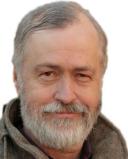Religion
Fresh Perspective for the Science Vs. Religion Debate
Thinking in larger ways about science and religion.
Posted October 17, 2022 Reviewed by Abigail Fagan
Key points
- Holding polar relationships of all sorts more systemically is key to finding meaning in our time.
- The polarity of science vs. religion has particular significance.
- Creative polarity at its most basic juxtaposes unity on one hand vs. difference on the other.
- In this simple recognition we find the possibility of larger understanding.
The science vs. religion debate is critical today psychologically because of how closely it ties to questions of meaning in a time when meaning so often escapes us. The Creative Systems Theory concept of Cultural Maturity describes how our times are demanding—and as potentially making possible—an essential new chapter in the human story. One characteristic of culturally mature understanding is that it helps us think more systemically about issues of all sorts that in times past we have thought of in polarized terms. There is no more basic such polarity than that which has historically divided the thinking of science and religion.
Getting to the Question That Can Help Us
The place to start with any polarity is the recognition that we have yet to ask the needed larger question. Here a person might assume it to be “Is God real?” given that it is the question that has conventionally divided thinking into two mutually exclusive, irreconcilable realities. But in fact, I don’t find it terribly helpful. This is not because I know the question’s answer, but rather because it is limited in where it can take us (unless we are willing to settle for endless circular debates).
The better question concerns the nature of truth. Over the course of history, the contrasting perspectives of science and faith have provided our bottom-line answers when it comes to truth. Sometimes the forms these answers have taken have spoken in concert; at other times they have manifested as warring opposites. But in the end, their juxtaposed vantages are what we have come back to. Our larger question becomes, “Just what is it that ultimately makes something true?”
For most people, the whole idea that it might be possible to get beyond the science vs. faith debate and engage the truth question in larger ways makes little sense. Or if the possibility is entertained, the assumption is that the answer would be so philosophical and obscure that it would have little practical value. But there is another legitimate explanation for why we might have a hard time imagining other possibilities. It has to do with how we have been capable of thinking in times past—with how understanding has worked and been structured.
A Conceptual Answer
Creative Systems Theory lets us address how the material and the spiritual might relate conceptually. For our purposes in this short post, it is enough that the theory further supports the fact that more encompassing perspective might be an option. But for those who have interest, there are important added reasons to take time with how the theory approaches the science vs. faith question. It brings clarity to one of the most essential recognitions if we are to understand polarity or polarization deeply.
It turns out that polarity at its most fundamental, rather than contrasting two kinds of difference, juxtaposes unity and oneness on one hand with difference and multiplicity on the other. We can apply this conclusion directly to the science vs. religion polarity. Science in its various forms over time can be thought of as having its origins in how the world looks from the difference/multiplicity side of fundamental polarity when experienced at a collective scale. Spirituality/religion in its various forms over time in a complementary way has its origins in how the world looks from the unity/oneness side of fundamental polarity when experienced at a collective scale. Creative Systems Theory thinks of science and religion as ultimate voices for the right and left hands of creative sensibility.
A closer look at the contrasting contributions of science and religion supports this interpretation. Science is about distinction—this as opposed to that. Biology delineates the creaturely into taxonomies of genus and species, chemistry gives us the periodic table and the interplay of atoms and molecules, and classical physics describes objects of differing mass and the action-and-reaction laws of material cause and effect. Spiritual/religious experience in contrast highlights oneness. We can think of religious belief through history in terms of four connectedness-related themes: how existence arose from the undivided (“in the beginning”), community (congregation and communion), right thought and behavior (shared moral assumptions), and how experiences interrelate (and, in the end, how it all interrelates). In Latin, re-ligare, the root of the word “religion,” means “to connect.” William James put it this way: “In mystic states we both become one with the Absolute and we become aware of our oneness.”
We can also use a creative frame to map the changing relationship of science and religion over time. In early societies, material and spiritual sensibilities tended to be spoken of almost as one. Later, as with much of the European Middle Ages, material and spiritual inclinations more often took expression in ways that were explicitly at odds. Later still, as with Cartesian dualism, science and religion more comfortably coexist, but they accomplish this feat by, in effect, ignoring each other’s existence. This sequence of juxtapositions is just what we would expect to find if the relationship between science and religion is ultimately creative.
A New, More Systemic Kind of Common Sense
Bringing more systemic perspective to the science/religion debate requires that we think with greater complexity and nuance than advocates of either polar position may appreciate. But in the end, where doing so takes us is also simpler—and ultimately common sense. We may have historically needed to think in terms of polarity. But there is no reason, ultimately to assume that reality is anything but whole.


